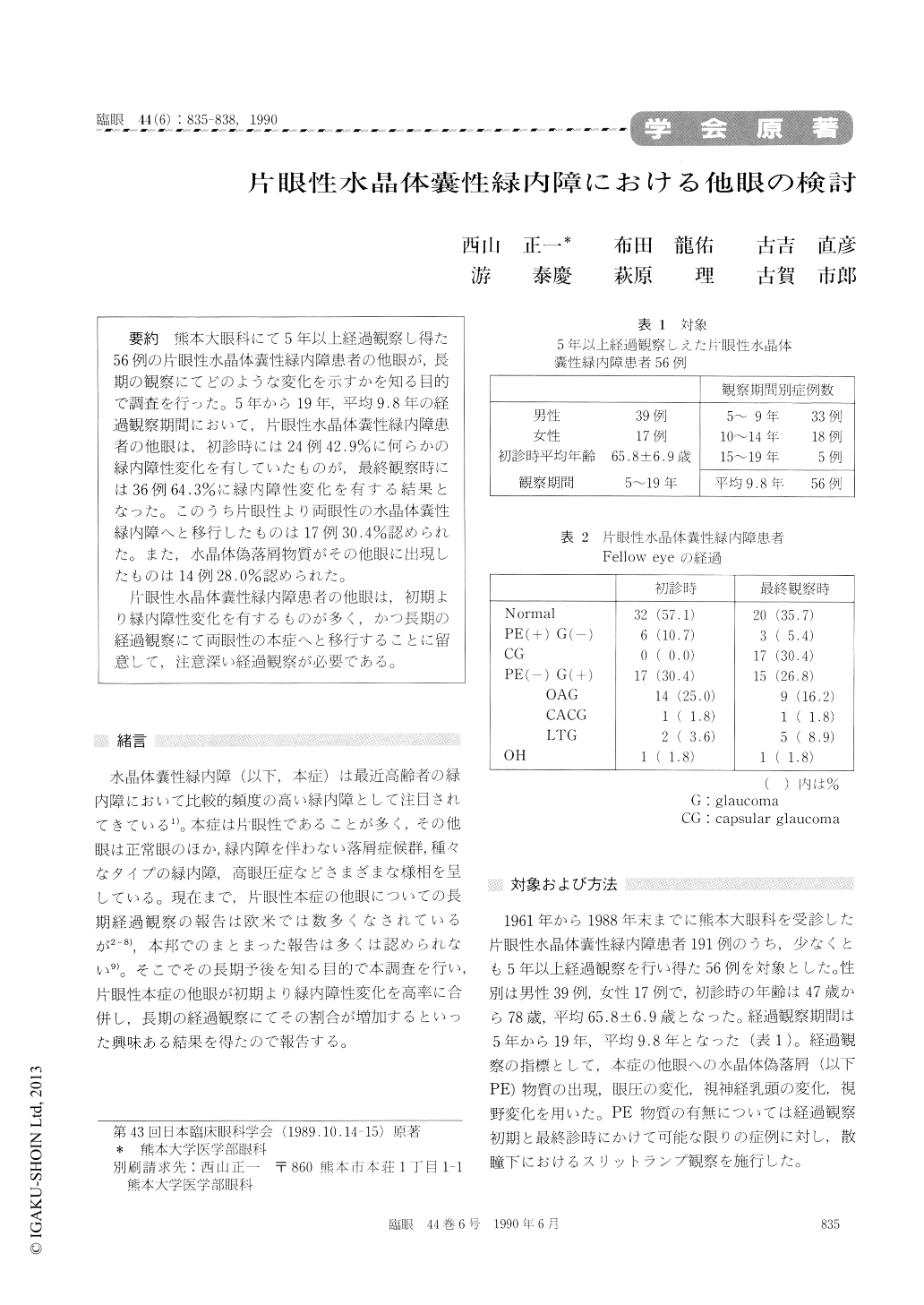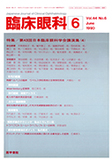Japanese
English
- 有料閲覧
- Abstract 文献概要
- 1ページ目 Look Inside
熊本大眼科にて5年以上経過観察し得た56例の片眼性水晶体嚢性緑内障患者の他眼が,長期の観察にてどのような変化を示すかを知る目的で調査を行った。5年から19年,平均9.8年の経過観察期間において,片眼性水晶体嚢性緑内障患者の他眼は,初診時には24例42.9%に何らかの緑内障性変化を有していたものが,最終観察時には36例64.3%に緑内障性変化を有する結果となった。このうち片眼性より両眼性の水晶体嚢性緑内障へと移行したものは17例30.4%認められた。また,水晶体偽落屑物質がその他眼に出現したものは14例28.0%認められた。
片眼性水晶体嚢性緑内障患者の他眼は,初期より緑内障性変化を有するものが多く,かつ長期の経過観察にて両眼性の本症へと移行することに留意して,注意深い経過観察が必要である。
We followed up 56 patients with unilateral glau-coma for periods from 5 to 19 years, average 9.8 years. Initially, the fellow eyes manifested glau-coma other than capsular glaucoma in 18 instances (32%). Pseudoexfoliation without glaucoma was present in 6 instances (11%). The incidence of glaucoma without pseudoexfoliation and pseudoex-foliation without glaucoma in the fellow eye thustotalled 43%.
At the end of follow-up, the combined rate rose to 36 instances, or 64%. Unilateral capsular glau-coma turned into bilateral one in 17 out of 56 cases, 30%. Pseudoexfoliation became manifest in the initially unaffected fellow eye in 14 out of 50 cases, 28%.
The findings suggest that patients with apparent-ly unilateral capsular glaucoma would have to be placed under longterm observation.

Copyright © 1990, Igaku-Shoin Ltd. All rights reserved.


